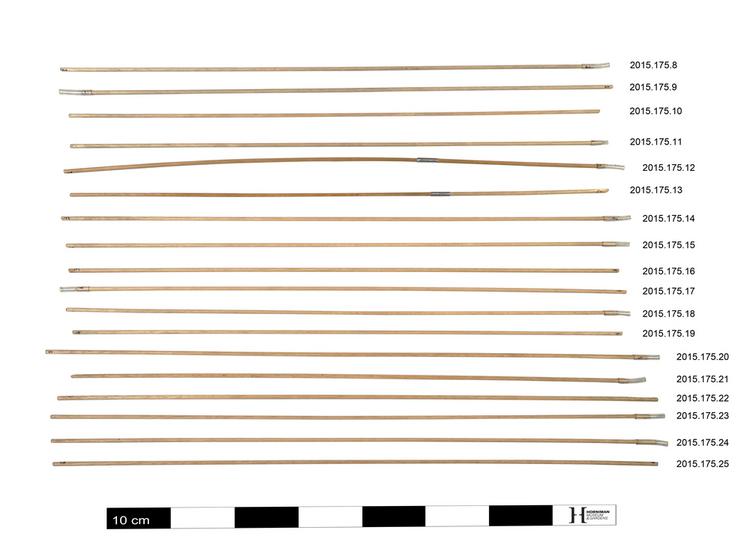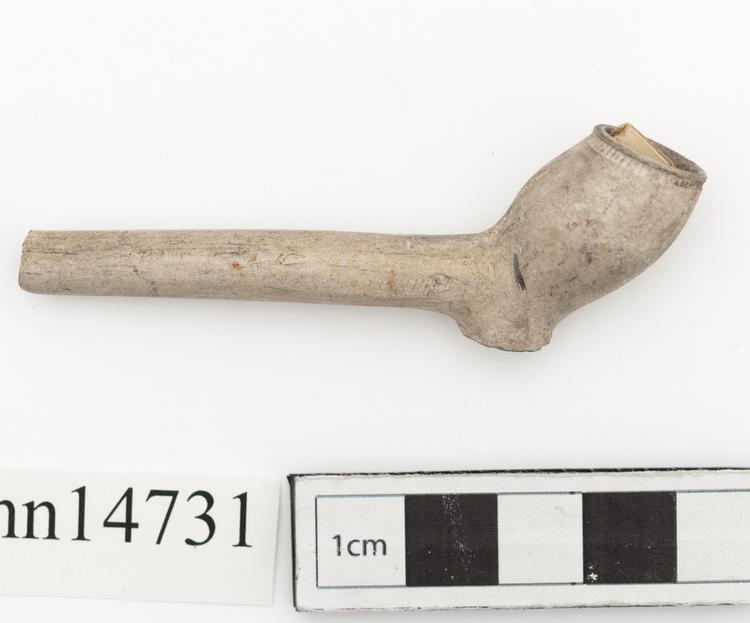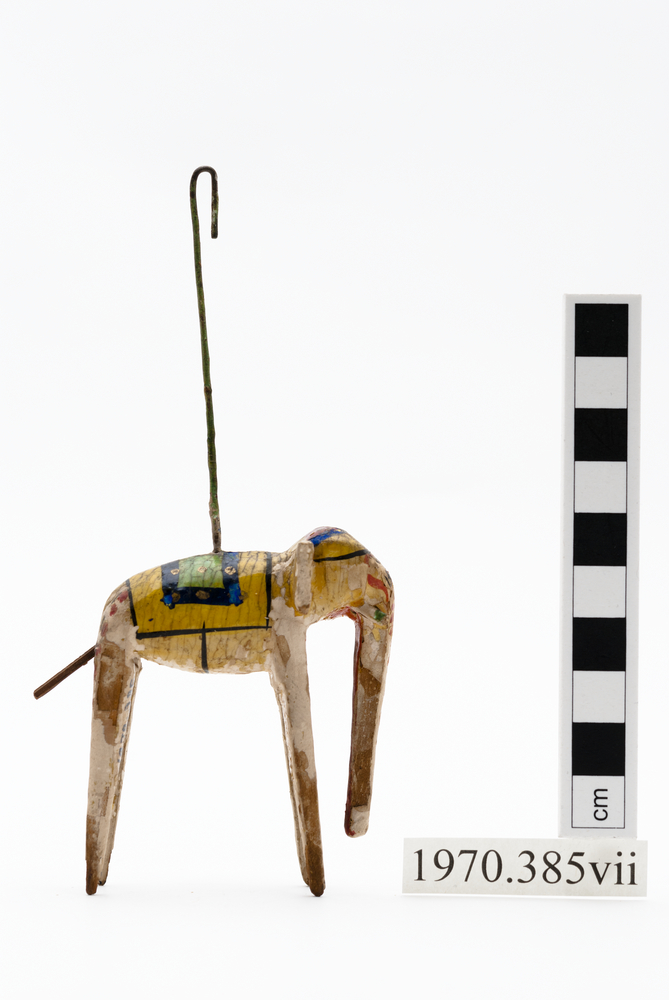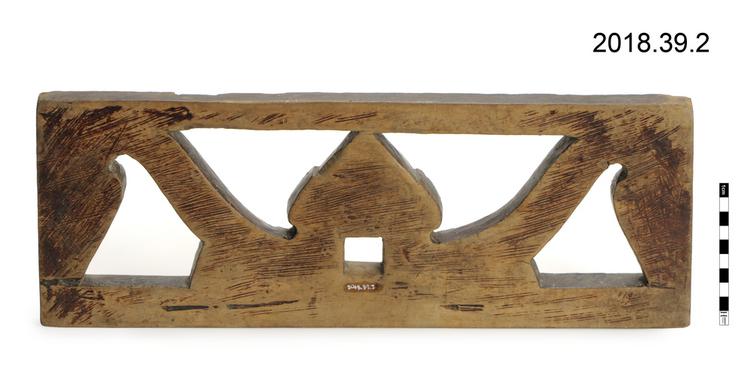
Love token. White and blue beads strung to form triangles that interlock to create a rectangle shape. White, dark blue, and red beaded tassling at the bottom. Safety pin at the top of the object to allow it to be fastened to clothes.
Zulu beadwork is used to convey messages between men and women about their availability for courtship and marriage, and as tokens of their love for each other. Always made by women and mainly worn by women, the shapes and colours used tell whether women are single, promised in marriage or already married. It can also reveal whether a woman has children or unmarried sisters and even where the family comes from. Beadwork is sometimes given to men by women as love tokens and worn by men to show their commitment to a woman.
Worn mainly by women as a head or neck band to give information about themselves. In the traditional Zulu lifestyle all adults aspired to be married and marriage gave them seniority over the unmarried. The hidden messages in beadwork made it easier for unmarried women to advertise their availability and for any embarrassing misunderstandings to be avoided. It also allowed a woman to express her love for a man by making a beaded love token for him.
Bead work is common throughout East and Southern Africa and the style varies from one culture to another. It is usually carried out by women, perhaps because their smaller hands are more nimble for the delicate work. However, it is a relatively modern practice since beads first arrived in Africa as items of trade. The peoples of East and Southern Africa used these colours to reflect their traditional beliefs and legends. Before the arrival of beads coloured natural materials such as seeds were already being used to reflect beliefs.
The Zulu people lived in the region now known as KwaZulu-Natal in South Africa and developed a tradition of beadwork that served an important social purpose. The colours and shapes in the beadwork worn showed whether the wearer was available for marriage, already promised in marriage, already married, how many children they had or information about their family, including where they came from. Although the traditional use of these beads is less widespread nowadays, they are still popular. Women usually wear beadwork as a head or neck band. Men relied on female relatives to explain the meanings to them Examples such as this pin are often made and sold to tourists with a simple explanation of their meanings.
The Shape
• The triangle represents the family, the corners are the husband, wife and child.
• A single triangle with the point facing down is the sign for an unmarried man.
• A triangle with the point upwards is the sign for an unmarried woman.
• The sign for a married man is two triangles joined by their points like an hourglass.
• The sign for a married is woman is two triangles joined at the base like a diamond.
The Colours
Seven different colours are used but their meaning changes depending on which colours are placed next to them. So each colour has a positive and a negative meaning.
• Black - marriage and birth or sorrow and death.
• Blue - faithfulness and a request or hostility.
• Yellow – A garden and fertility or thirst and withering.
• Green - contentment or discord.
• Pink – status or a promise or poverty and laziness.
• Red – physical love and strong feelings or anger and impatience.
• White – love, purity and virginity or no negative meaning.
When white is used next to any colour it always gives it the positive meaning, so according to the above this pin seems to represent a request for faithfulness (blue and white) to a married man (2 triangles joined point to point).


































































































































































































































































































































































































































































































































